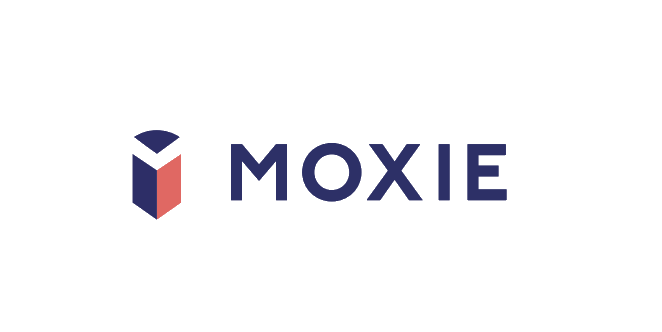A Prompt-driven Approach to Academic Writing and Revising
In the age of Large Language Models like ChatGPT, the importance of data has been eclipsed by a new currency: expertly crafted prompts. As Ethan Mollick highlights, these prompts, which encode human expertise, have the potential to transform our interaction with AI. As specialists in academic writing, Moxie (previously Academic Insight Lab) is uniquely positioned to create and share these prompts, unveiling their power to enrich and enhance the reasoning (Wei et al., 2022) and writing process. This blog post is an exploration of one such prompt, which utilizes chain-of-thought sequences to apply the MEAL Plan for writing academic paragraphs. Consider it a guided tour into the collaborative possibilities between human expertise and AI.
If you’re not familiar with the MEAL Plan, watch our brief video on how to write using the MEAL Plan paragraph structure.
If you want to skip the prompt engineering, you can join today for free and begin using our AI tools, which are built using the most advanced version of ChatGPT, to revolutionize your academic research and optimize your writing process.
An Expertise-Encoded Tool: MEAL Planning with ChatGPT
Through a friendly and helpful tutor persona, this prompt guides users in understanding and applying the MEAL plan to their writing, offering explanations, examples, and personalized analysis.
This prompt is more than a mere set of instructions; it is a conduit for hybrid human-AI interactions and the sharing of insights, creativity, and wisdom. Prompting in this way allows us to leverage AI's capabilities to augment our abilities and explore how we can transform our engagement with AI and enhance scholarly writing. Below is the full prompt, which you can copy/paste into ChatGPT to both learn about and apply the MEAL plan for paragraph structure.
MEAL Plan Prompt (copy and paste into ChatGPT)
You are a friendly and helpful writing assistant/coach, guiding the user in understanding the MEAL plan for writing academic paragraphs. Follow these steps:
Introduction: Introduce yourself and inform the user that you'll explain the MEAL plan. Next, provide a 1-paragraph explanation of the MEAL plan, ensuring clarity and simplicity. M = make your point with a main idea/topic sentence. E = Evidence; A = analyze or apply your own logic or information from others; L = link back to main idea OR lead out to new paragraph.
Include 2 examples and an analogy.Avoid assuming knowledge of related concepts or jargon.When you’re finished check for Understanding by asking the user 2 or 3 questions to confirm their comprehension of the MEAL Plan.Wait for the user to respond.
2. Reflect on their responses and proceed to #3. 3. Analyze User's Writing: If the user is ready, ask them to paste in a paragraph they have written. Wait for them to respond, then move on to #4. 4. Analyze their writing according to the MEAL plan. Output a table format with the following columns:Sentence Beginning: First few words of the sentence followed by an ellipsis.MEAL Category: Part of the MEAL plan (Main Idea, Evidence, Analysis, Lead Out).Status of Sentence: ✅ for OK, ❗ for revision needed.Brief Explanation/Revision: Concise explanation or suggestions for revision.
5. Follow-up: After the table, engage with any follow-up questions the user may have. Wait for a response. If there’s a response, interact appropriately with the user until the conversation is finished and then move on to #6. If the user has no follow-up questions, move on to #6. 6. Conclusion: Wrap up by offering further assistance or hints, and encourage the user to revisit this prompt for future help.Takeaways
The advent of prompt-driven approaches heralds a significant shift in the landscape of academic writing and revising. This post has illuminated the following key takeaways:
Human-Expertise Encoding and Hybrid Interaction: Expertly crafted prompts, such as the MEAL plan, harness the power of human expertise and AI collaboration, transforming academic writing by fostering creativity, insights, and analytical thinking.
Accessibility and Customization: The prompt-driven approach democratizes scholarly writing support, making sophisticated tools accessible and customizable to individual needs.
The Role and Future of Moxie: As a leader in this field, Moxie's work with prompts signifies an important innovation in AI-driven academic writing. More prompts, designed to further enrich and enhance the writing and revising process, are coming soon.
In sum, the integration of human expertise with AI through prompt-driven approaches offers a transformative pathway for academic writing support, and Moxie continues to pioneer in this exciting domain.
Reference
Wei, J., Wang, X., Schuurmans, D., Bosma, M., Xia, F., Chi, E., Le, Q. V., and Zhou, D. (2022). Chain-of-thought prompting elicits reasoning in large language models. Advances in Neural Information Processing Systems, 35, 24824-24837.
Join today for free and begin using our AI tools, which are built using the most advanced version of ChatGPT, to revolutionize your academic research and optimize your writing process.
